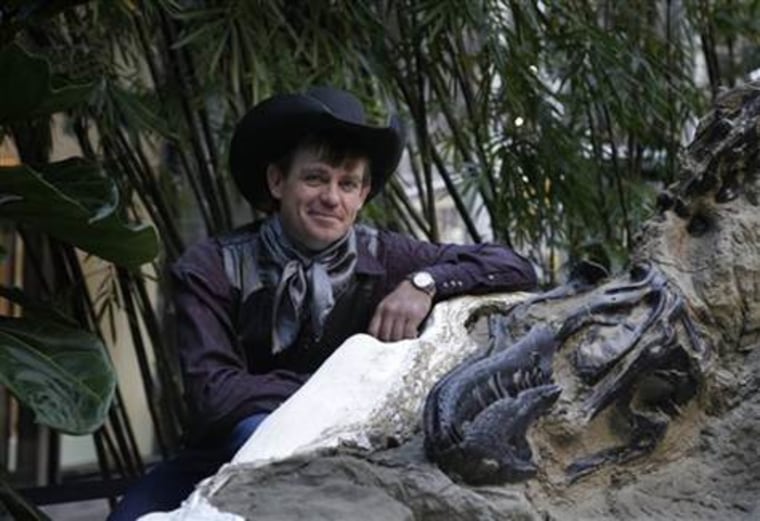NEW YORK- Two fossilized dinosaur skeletons, dubbed the "Montana Dueling Dinosaurs" because they appear forever locked in mortal combat, failed to sell Tuesday at a New York City auction.
A pre-sale estimate had predicted that the skeletons, offered as a single lot, could fetch between $7 million and $9 million — a price out of the reach of most museums. There were hopes that a wealthy buyer would donate the skeletons to a public institution, similar to how The Field Museum came to own Sue, a Tyrannosaurus rex discovered in South Dakota in 1990. The museum acquired Sue at a total cost of $8.36 million, including premium, with backing from McDonald's, Disney and other donors.
But the skeletons did not make the reserve at the Bonhams auction; the highest offer was $5.5 million. Auction officials said they remained hopeful that they'd find a buyer, possibly among institutions that had previously expressed interest.
The discovery began with a dinosaur pelvis protruding through rock at the Montana ranch. Three more months of chiseling and digging revealed a remarkable discovery: two nearly complete, fossilized dinosaur skeletons of a carnivore and herbivore, their tails touching.
A pushed-in skull and teeth of one dinosaur embedded in the other suggested a deadly confrontation between them. Clayton Phipps, a fossil hunter who made the discovery on his neighbor's land in 2006 in the fossil-rich Hell Creek Formation, gave the fossils their name.
The fossils are believed to be a Nanotyrannus lancensis, a smaller relative of the T. rex, and a newly discovered species of Chasmosaurine ceratopsian, a close relative of the Triceratops, which lived at the end of the Cretaceous age some 65 million years ago.
"I am just the lucky guy that happened to stumble out there and find this dinosaur," Phipps said. "I really appreciate the academic paleontologists that understand the importance of what us amateurs bring to the mix. I am hoping that it will be professionally and academically studied. ... I want to know more about them."
They were found fully articulated with pockets of skin tissue attached. They have been separated into four large blocks because of their total 40-ton weight and are on display in a plaza adjacent to Bonhams.
Kirk Johnson, director of the Smithsonian's National Museum of Natural History, called the dinosaurs "a significant discovery."
"They are a superb pair of specimens and are certainly of great scientific and display value," he said. "This pair is certainly a unique find" for the Hell Creek Formation.
Thomas Lindgren, Bonhams co-consulting director of natural history, said scientists will have to determine whether the ceratopsian was indeed a new species, but either way, it would "still be one of the rarest ceratopsians of all time."
"It is either the most complete and oldest triceratops that had lived at the end of the Cretaceous or it's a brand-new species," he said.
But Jack Horner, a paleontologist at Montana State University, called the promoters' claims a means "to enhance the price of the specimen."
"These fossils are not worth anything because they were collected to sell and not specifically for their science," he said.
Johnson said the skeletons would need to be extracted from their enclosing sandstone and compared to other skeletons in various museums to determine their "actual completeness." But he said finding a carnivore and herbivore together is still "very unusual."
